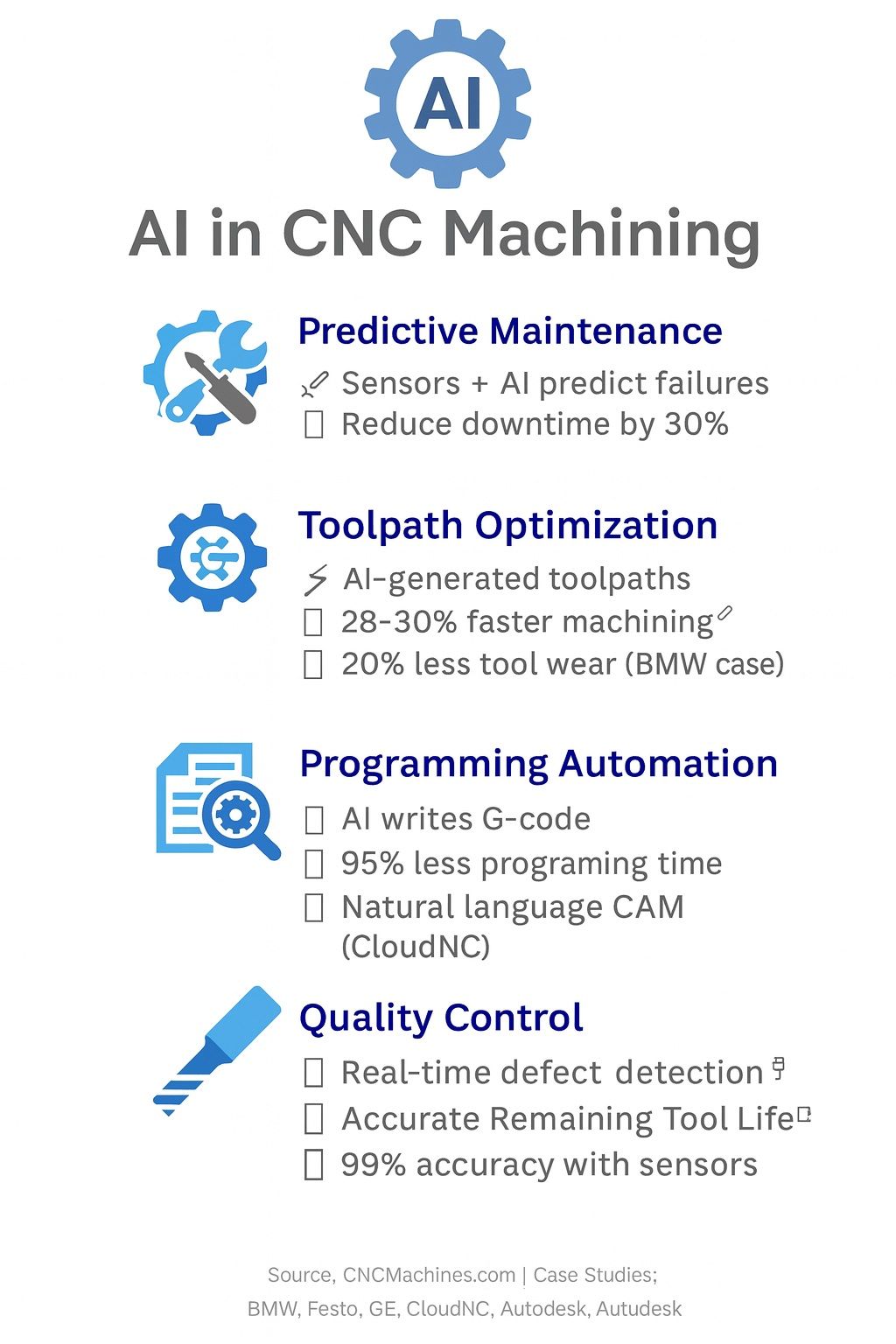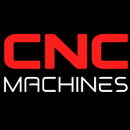How AI Transforms CNC: Real Case Studies on Toolpath, Maintenance & Quality

How AI Will Impact CNC Machines: A Visualized, Case-Powered Insight
Artificial Intelligence (AI) is transforming CNC (Computer Numerical Control) machining—from intelligent toolpath optimization and predictive maintenance to real-time quality control. Below is a detailed breakdown incorporating a visual aid and real industrial case studies.
Visual Overview: AI + CNC Machining
(Above image visualizes AI integration in CNC machining—highlighting data sensors, real-time monitoring, and dynamic toolpath adjustment.)
Case Studies: Real-World AI in CNC
1. Toolpath Optimization — Aerospace Manufacturer (Fusion 360 / CAM Tools)
A mid-size aerospace parts manufacturer applied AI-powered toolpath optimization using Fusion 360. Results included:
- 28% cycle time reduction
- 40% fewer tool changes
- 15% improved surface finish
- 22% lower production costs
2. AI-Enhanced Toolpath Programming — Autodesk + CloudNC
Autodesk integrated AI with CloudNC’s CAM tools:
- Achieved up to 95% reduction in programming time
- Enabled natural language commands—e.g., “machine the top face of this part”
3. Predictive Maintenance — Festo AX (Machine Tools)
Festo’s AI-driven platform, Festo AX, helped a machine tool manufacturer:
- Detect early anomalies in tool magazine components
- Save $16,000 per machine annually
- Achieve ROI in under a year
4. Toolpath Optimization — BMW
BMW used AI for CNC toolpath optimization and gained:
- 30% reduction in machining time
- 20% decrease in tool wear
5. Predictive Quality & Maintenance — Bosch & Siemens
- Bosch reduced maintenance costs by up to 25% and downtime by nearly 30% using AI-powered predictive maintenance.
- Siemens achieved a 20% boost in machine availability and a 15% cut in maintenance costs by integrating AI into its CNC maintenance systems.
6. Jet Engine Manufacturing — GE Aviation
GE Aviation deployed AI on sensor data for predictive maintenance:
- Scheduled repairs proactively before failures
- Increased uptime and reduced emergency repair costs
Research Spotlight: Advanced AI Techniques
- Ultrasonic + CNC Tool Wear Prediction Researchers used ultrasonic microphone arrays and convolutional neural networks (CNCs) to accurately predict the Remaining Useful Life (RUL) of cutting tools.
- Single-Sensor Tool Wear Prediction A deep learning approach using just one accelerometer achieved 99.1% accuracy in identifying tool wear.
Summary Table: AI in Action
| Impact Area | AI Application | Case Study / Result |
|---|---|---|
| Toolpath Optimization | AI-enhanced CAM programming | Aerospace: 28% time cut; BMW: 30% faster, 20% less wear |
| Programming Automation | Natural language & AI assistant in CAM | Autodesk + CloudNC: 95% reduction in programming time |
| Predictive Maintenance | Sensor-based failure forecasting | Festo AX: $16,000 saved/machine; Bosch: 30% less downtime |
| Quality & Uptime | Real-time monitoring, uptime improvement | GE Aviation: fewer emergency downtime |
| Tool Wear Prediction | CNN & single-sensor predictive models | RUL accuracy high; 99.1% via accelerometer |
Final Thoughts
These visual and case-driven insights illustrate how AI adoption isn’t theoretical—it’s delivering measurable ROI across CNC operations. Whether it's transforming programming workflows, boosting maintenance efficiency, or optimizing toolpaths—AI is reshaping the manufacturing landscape.



